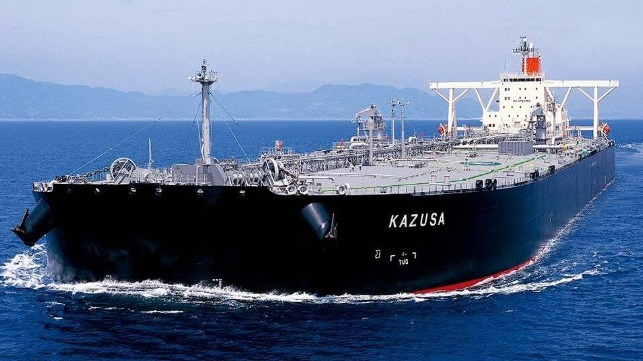Sign of VLCC Rebound as MOL Places Order for Japan’s First LNG Tankers

The tanker market and specifically the VLCC segment is showing signs of the expected rebound from a cyclical low as Japan’s Mitsui O.S.K. Lines (MOL) placed its first new shipbuilding order for VLCCs. The order came as part of a larger investment by MOL in LNG-fueled ships to drive its efforts to implement its long-term decarbonization plan for the fleet.
Shipbuilding for new tankers and specifically VLCCs has been at low levels following the long-term decline in the oil markets and shipowners' reluctance to invest in new tonnage. At mid-year, Clarkson reported that the orderbook for tankers had reached a 25-year low. Combined they reported orders for crude oil and product tankers stood at just 35 million dwt.
Analysts have been looking for signs of the market turn as shipowners spoke to the expectations that the segment would respond to the increases in oil prices. John Fredriksen for example justified the planned merger of Frontline and Euronav speaking of how they would be positioned for the expected turn in the market with the largest fleet of supertankers.
Today, Frontline reported mid-year results with more than $300 million in revenues for the first half of the year and $47 million in net income for the second quarter. They cited improving spot rates while making the forecast that day rates in the third quarter would for the first time in several quarters exceed estimated average daily cash breakeven rates.
“We have over the last several quarters pointed to what we believe will be a cyclical up-turn for tankers, and this view has only been further cemented during the first half of the year,” commented Lars Barstad, Chief Executive Officer of Frontline. “Supply and demand for oil and product transportation has gradually been tightening as the world recovers from the COVID-19 pandemic, and a pivotal point seems to have been found. With the lowest orderbook as a percentage of the fleet seen in decades, and oil supply and demand normalizing, we believe this bodes well for the years to come.”
Frontline was among the few companies to take delivery of new VLCCs in 2022. During the second quarter, Hyundai Heavy Industries delivered both the Front Alta and Front Tweed, both 300,000 dwt VLCCs to Frontline. They have four additional VLCCs also being built in South Korea nearing delivery.
MOL added to the order book announcing today that it will build two new VLCCs. The tankers which will each be approximately 1,114 feet in length and 309,000 dwt will be built by Dalian COSCO KHI Ship Engineering Co., the joint venture between Kawasaki Heavy Industries and China COSCO Shipping Corporation. In addition to being a rare order for VLCCs, they will also be notable as the first LNG-fueled VLCC ordered from a Japanese tanker operator. They are scheduled for delivery in 2025 and 2026.
The order is also part of MOL’s plan to adopt clean alternative energy as it moves toward net zero GHG emissions. The plan calls for expanding its fleet of LNG-fueled vessels to about 90 by 2030. In addition to the two VLCCs, MOL also announced the order for four 210,000 DWT-class Capesize bulkers. They will be built by CSSC Qingdao Beihai Shipbuilding Co., MOL’s first orders with this Chinese yard, and are due for delivery in 2025 and 2026. MOL reports that with these orders it has 16 ocean-going LNG-fueled vessels under construction, including these bulkers and VLCCs in addition to car carriers, bulkers, and six coastal vessels which are ferries, tugboats, and a coastal cargo vessel.
Analysts were encouraged by the news of MOL’s VLCC order as another sign that shipowners are preparing for an up-cycle in the sector.
